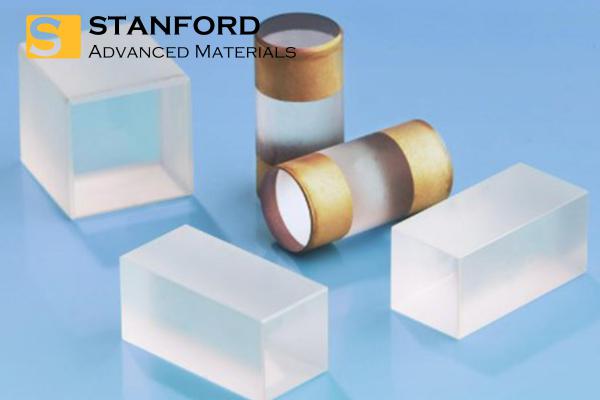DKDP & KDP Crystal Description
Potassium Dideuterium Phosphate (DKDP) and Potassium Dihydrogen Phosphate (KDP) are inorganic crystals known for their outstanding nonlinear optical and electro-optic properties. Both belong to the phosphate crystal family and are widely used in laser and photonics technologies. While chemically similar, DKDP features deuterium in place of hydrogen, offering advantages such as lower absorption in the infrared range and improved thermal stability, critical for high-power laser applications.
DKDP & KDP Crystal Application
1. Laser Frequency Conversion
DKDP and KDP are primary choices for second-harmonic generation (SHG) and other frequency conversion processes. They enable the transformation of infrared laser output into visible or ultraviolet light, vital for systems like Nd:YAG lasers. This makes them essential in precision machining, UV lithography, and scientific spectroscopy.
2. Electro-Optic Modulation
These crystals are highly responsive electro-optic materials, used to construct electro-optic modulators. Such modulators control laser beam intensity or phase and are found in telecommunications, lidar systems, and high-speed optical signal processing.
3. Pockels Cells
DKDP and KDP are the go-to materials in Pockels cells, which control light polarization via an applied voltage. Pockels cells are widely deployed in:
-
Q-switching for pulsed lasers
-
Beam steering and shaping
-
High-speed optical shutters
4. Optical Parametric Devices
Both crystals are used in Optical Parametric Amplifiers (OPAs) and Optical Parametric Oscillators (OPOs), which provide tunable laser output across a wide spectrum. This is crucial in applications like:
5. High-Energy Laser Systems
From laser rangefinders to laser welding and ablation tools, DKDP and KDP crystals serve as integral components in industrial and research-grade laser systems due to their ability to handle high optical intensities and deliver stable performance.
6. Nonlinear Optical Research
These crystals are foundational tools in exploring light-matter interactions, quantum entanglement, and photonics research, enabling experiments in quantum optics and ultrafast laser dynamics.
7. Defense and Aerospace
KDP and DKDP are employed in military-grade laser rangefinders, targeting systems, and countermeasure lasers. DKDP, in particular, is preferred in high-power systems due to its lower absorption in the IR spectrum and enhanced resistance to laser-induced damage.
8. Biomedical Imaging
In multi-photon and deep-tissue imaging, DKDP/KDP crystals help generate the short-wavelength pulses needed for clear, high-resolution internal imaging, supporting advanced microscopy and optical diagnostics.
 Get a Quote
Get a Quote
